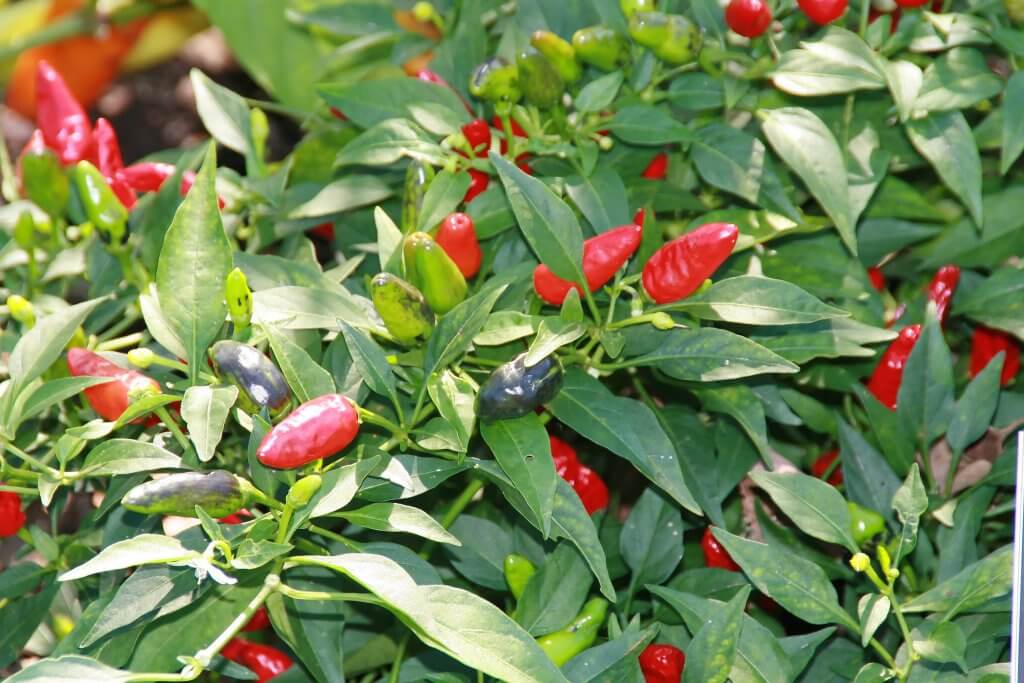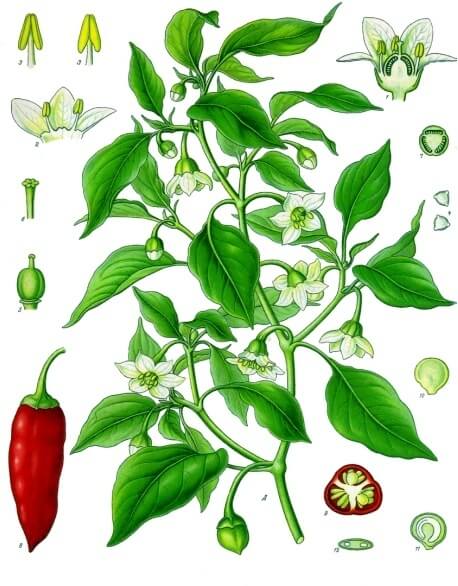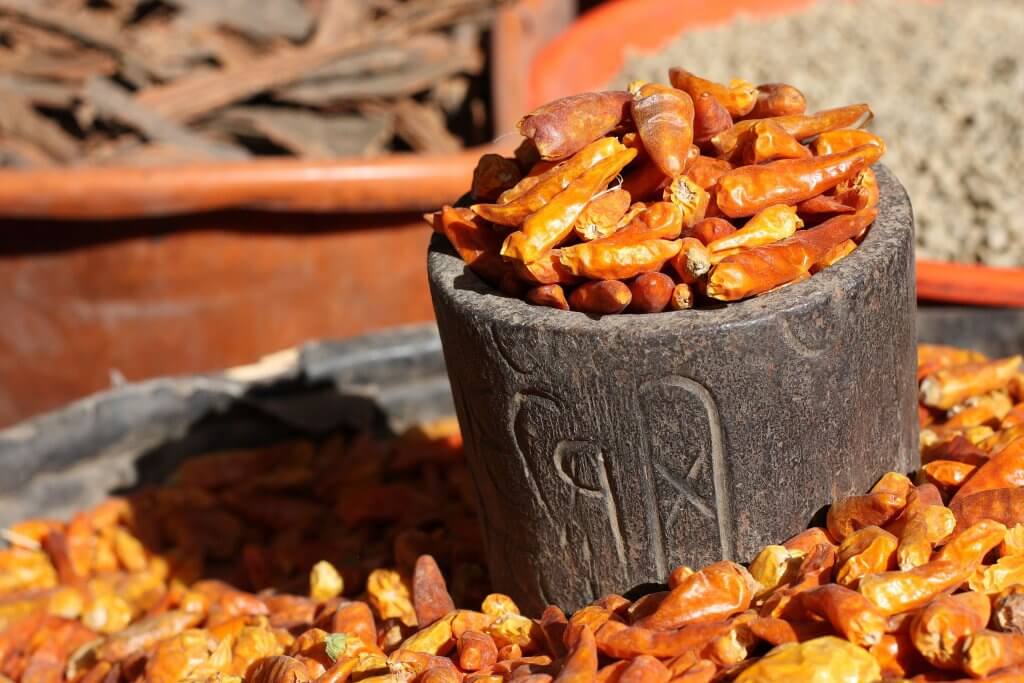Cayenne (Capsicum annuum) is a chilli plant where the fruits are used to create a popular spiced powder called cayenne pepper. They are native to South America and as far North as the North American border, however you will find cayenne growing around the world. North America and India have a large cayenne cultivation industry. The plants are harvested commercially and many people choose to grow their own plants. You may often see it called by different names, including bird pepper, cow horn pepper or guinea spice.
Cayenne can be found growing to a maximum height of 60cm. Its leaves are deep green ovals and are spaced along slender stems. When flowering, you will see small white or pale purple star shaped flowers emerging from the stems.

Cultivation and History of Cayenne
Cayenne is a perennial as it will die back after a number of frosts. However if you choose to grow indoors or live in a warmer climate, it will survive a few seasons. However the yield of fruits will be much smaller. They are self pollinating so their scent is particularly attractive to a number of pollinators.

Begin the seeds indoors by planting approximately 8 weeks before the last frosts. In the garden, place them within a sunny spot, as the fruits need a lot of sun to ripen. They can grow in a range of soils, from acidic to alkaline. Ensure that the soil is well drained.
Harvest the fruits about 10 weeks after germination has started. To create the cayenne pepper, the fruits are harvested when ripe and red in color. They are then dried and ground into a powder. The spiciness can vary depending on the variety and also whether the seeds are included. Adding the seeds will give the pepper a more fiery taste.
Toxicity
Cayenne fruits are not toxic to consume. However it is recommended to avoid eating large quantities, as the substance ‘capsaicin’ can be toxic if consumed in high amounts. The leaves are not usually consumed, this is generally because they lack flavor compared to the fruits. Some varieties do however have inedible and poisonous leaves.
Uses
Culinary uses of Cayenne
You can use cayenne pepper to add color as well as flavor in some dishes. It also makes an excellent condiment for seafood dishes. Sprinkle a light dusting of powder over smoked salmon, oysters or scallops for a lightly spiced flavor.
A popular western dish that uses cayenne is deviled eggs. Boil an egg and slice it in half. Secondly remove the yolk and mix with mayonnaise and Worcestershire sauce, then place back into the egg white. Finally add a sprinkle of cayenne.
On the Scoville scale, cayenne has a rating of 30,000 to 50,000 units, which is unlikely to have you reaching for the water. The substance responsible for creating its hotness is capsaicin.

Medicinal uses of Cayenne
Cayenne has a number of beneficial health properties that have been confirmed with science and research. You can use it to improve metabolism, circulation and also as a digestive aid. The substance capsaicin can often by found in ointments that treats arthritis and muscle aches and pains.
It has been valued throughout history for its properties. Native Americans and Mayan people have used it in relieving pains from arthritis and treating coughs and colds.
Did you know…
The fruits of cayenne are officially called ‘berries’. They are considered fruits and not classed as a vegetable. They vary in color depending on their ripeness and variety.
Conclusion
Capsicum annuum is a fantastic plant to grow within your garden.Harvesting the fruits and creating your own cayenne pepper is is a very rewarding experience. The spice can be used in a wide array of cuisines and dishes, from Indian curries to a seasoning for roasted vegetables. When growing the plant can also look very attractive and ornamental. Some varieties are actually cultivated for this purpose. For example the Bolivian Rainbow, which grows an array of colorful fruits.
—————Written by Hannah Sweet
Hannah is a freelance writer and graphic designer from the UK. With a penchant for travelling, photography and all things botanical, she enjoys writing about a wealth of topics and issues, from conservation and slow living, to design and travel. Learn more about her writing and design services at www.sweetmeanders.co
Many of our readers find that subscribing to Eat The Planet is the best way to make sure they don't miss any of our valuable information about wild edibles.
See our privacy policy for more information about ads on this site






